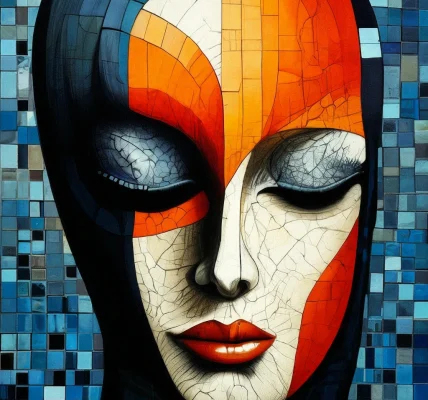For centuries, art has always intertwined with self-expression and served as a means of storytelling and social commentary. There have always been street art and traditional art, which has resulted in debates surrounding their artistic merit, legitimacy, and social value. This usually revolves around how street art is thought to be confined to a hallway in a museum, while street art can be practiced publicly, serving as a outlet for raw creativity. Urban creativity is gaining recognition, thus shifting how art is perceived, valued and integrated into society.
The Essence of Traditional Art
Any expression that falls under the term ‘traditional art’ ranges from paintings to sculptures and including classical drawings. With a rich history behind it, traditional art commonly follows established methodology that are difficult to master and refined in technique, taking years of training. It is primarily displayed in galleries or museums and with private collectors, thus able to be preserved and appreciated by art enthusiasts and scholars.
When compared to modern art, traditional art seems to lag behind the present times. Nevertheless, the most fundamental feature is the meticulous attention to form, composition, symmetry, and even perspective. Impressions from historical epochs like Renaissance, Baroque, or Impressionism influences the artists. Art of this nature is appreciated for craftsmanship and the capacity to express unique sentiments through highly structured and visual storytelling. While admired, street artist’s work has also been criticized for being overly exclusive and out of the public’s reach. Most members of the public will never go to a gallery or constantly afford to purchase conventional art until late into life, so their access to this form remains forbidden. The Emergence of Street Art On the other hand, street art is mot contemporary and fluid which means it can always be found with or without galleries and museums. public and city spaces like walls, sidewalks, and bridges are open for all artists and this allows more people to appreciate the art. Not like modern art, street art is anything but fixed and gives rise to free expression.

Street art refers to graffiti, murals, stencils, and even installations that have become popular in cities. Artists employ these tools to comment politically, address social issues, or merely beautify neglected sights. Street art is a mix of a rebellious and undisciplined attitude, which goes against rules and therefore gives a voice to the silent and reflects present-day society.
It used to be that street art was considered as simple vandalism, but today it stands as a prominent art movement. City after city has adopted urban art and has started hiring artists to turn the boring buildings into beautiful works of art. Today, there are famous street artists such as Banksy and Shepard Fairey who’s work is known globally and sold for high prices at auctions.
How Street Art is Reshaping Views
The rise of acceptance towards street art has steered in a new direction the way people think of creativity and its worth. This type of art has proven that imagination can spring from anywhere and does not have to be locked in provided institutions. A great number of classical artists have even started using elements of street art in their paintings, thus creating a fusion of both styles.
Street art poses a challenge to the traditional perspectives regarding art being permanent. Unlike other forms of art such as paintings which are preserved through time, street art is often removed or covered up by certain urban developments or by the authorities. The appreciation of street art lies within its impermanence and its ability to showcase that art can indeed be impactful even in a fleeting manner.
Furthermore, local businesses as well as planners have begun to realize the positive cultural and economic effects of street art. Murals help draw in tourism, improve identity in local areas, as well as help develop economically depressed areas. Public mural art festivals such as the Miami’s Wynwood Walls or the Berlin Street Art Festival, transform previously neglected parts of the cities into stunning cultural landmarks.
Final Thoughts
The distinction between street art and fine art reveals the changes that have occured regarding creative expression in contemporary times. While traditional art pieces serve as an integral part of cultural inheritance, street art has pioneered the radical shift in creativity. Both these styles and their respective approaches offer something unique and the fusion of these styles can be witnessed in modern art. Urban creativity continues to challenge the existing perspectives regarding the role of art and inspires communities to consider the possibility for any existing form of art to provoke thought and unite the people.




